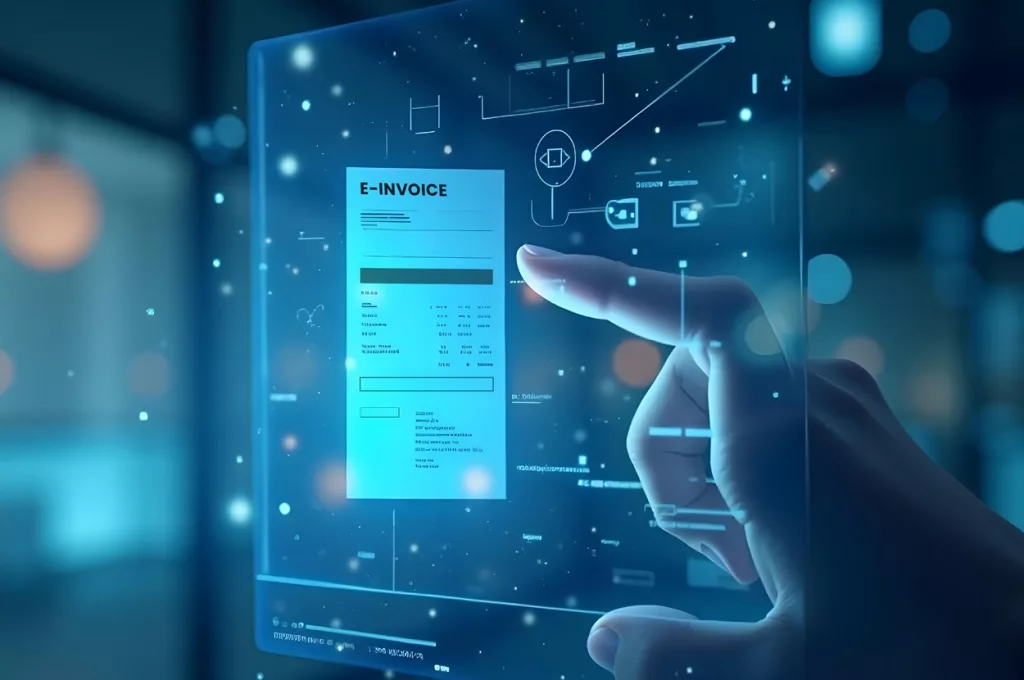Cross-border EU VAT administration sometimes feels like running a blindfolded maze. Each EU-member has its rules, its registration threshold, its reporting format, and its filing frequency. And to complete the picture, with the uptick in digitization, never has the imperative to do it right—and to do it fast—all been greater.
This paper deconstructs the changing landscape of the Value Added Tax in Europe, the implications of the Value Added Tax in the Digital Age (ViDA) reforms for business, and the technology-led future of compliant cross-border business.
Why EU VAT Compliance Cannot Be An Afterthought Any Longer
For any business operating across multiple EU jurisdictions, VAT compliance is not just about ticking boxes. It directly affects your working capital, audit exposure, and business continuity.
Failing to maintain pace with evolving tax principles, late reconciliation of credits, or missing filings might result in:
- Significant penalties
- VAT credit barriers
- Lengthy audit cycles
- Supply chain disruptions during operations
As the European Commission explains, the continent loses billions in VAT fraud, mistakes, and non-compliance each year. That’s why the regulators are implementing more stringent digital reporting and in-real-time audit mechanisms—all beginning with ViDA.
Understanding ViDA: EU’s Digital VAT Revamp
The Value Added Tax in the Digital Age (ViDA) initiative is the biggest transformation in the EU Value Added Tax (VAT) system in decades. Launched by the European Commission, it’s aimed at introducing more transparency, automation, and uniformity in the member states.
The Three Pillars of ViDA:
- Digital Reporting Requirements (DRR)
This pillar Introduces implementation of e-invoicing and digital reporting to facilitate cross-border VAT transactions across EU countries allowing member countries to have efficiency, transparency and o help tax authorities to prevent fraud and delay.
- Platform Economy VAT Reforms
This pillar introduces a deemed supplier rule for digital platform offering short term accommodation or passenger transportation service to make them responsible for collecting and remitting VAT.
- Single VAT Registration in the EU (SVR)
This pillar Extends the One-Stop Shop (OSS) and Import OSS (IOSS) to ensure single VAT registration for the businesses operating in multiple counties to minimize cross-country multiple VAT registrations, payment and VAT compliance cost related to different jurisdiction
Why this matters: Once implemented, businesses must be able to transmit, reconcile, and store invoices digitally—almost in real-time—and ensure accuracy across systems. Manual handling won’t make the cut.
ViDA Timeline & Current Status (as of mid-2025)
While the ViDA package was initially adopted in December 2022, adoption has been delayed due to lack of unanimous agreement at the EU Council level.
Milestone timeline till 2025
| Milestone | Timeline |
| EU commission propose ViDA plan | January 2022 |
| Adopted by European Commission | Completed – Dec 2022 |
| Committee on Economics and Monetary affairs proposes postponement of ViDA | November 2023 |
| Member state agreeing to adopt ViDA | 5 November 2024 |
| European parliament approves ViDA | 12 February 2025 |
| EU officially adopts ViDA | 11 March 2025 |
| ViDA published in EU official journal | 25 March 2025 |
| Member state can implement mandatory domestic e-invoicing for B2B and B2C transactions without EU approval | April 2025 |
Upcoming Timelines
| Milestone | Timeline |
| OSS includes B2C sales and intra-EU stock transfer for direct sales | 1 July 2028 |
| Digital platform must collect and pay VAT for transport and accommodation service | January 2030 (Optionally from July 2028) |
| E-invoicing will be mandatory for intra-EU B2B and RCM transactions. National E-invoicing system will be aligned with EU standards (except for those established before 2024) | 1 July 2030 |
| National E-invoicing for those established before 2024 will be aligned with EU standards | 1 January 2035 |
Until then, businesses are advised to start preparations—modernizing invoicing workflows, choosing Peppol-compliant platforms, and reviewing cross-border VAT strategies.
Technology as a Core Compliance Enabler for EU VAT
Digital infrastructure is now essential to EU VAT compliance. Businesses relying on fragmented systems or country-specific workarounds are more likely to encounter delays and compliance risks.
Here’s how forward-looking companies are preparing:
ERP Integration
Integrating ERPs like SAP, Oracle, or Tally to tax platforms removes duplication and improves data consistency, workflow automation, easy data transfer, keeping everything in sync.
Automated Data Checks
Built-in validations detect errors such as incorrect VAT codes, unmatched tax amounts, incomplete invoices details or non-standardized format before submission.
Peppol-standardized e-Invoicing
Using certified Peppol Access Points ensures secure, country-compliant and standard e-invoice format and transmission across borders ensuring interoperability and easy access.
Centralized Document Repositories
Consolidating tax records with audit trails, timestamps, and access history simplify regulatory checks and reduce audit times
Automation and RPA
Routine tasks such as calculations, return preparation, , and reconciliation are streamlined with automation, making everything quicker and more accurate.
Dashboards and Alerts
Real-time dashboards help tax teams monitor filing status, refunds, and potential discrepancies across multiple countries.
The Tangible Benefits of Digital VAT Compliance
Embracing technology doesn’t only mitigate regulatory risk. Adopting technology for VAT compliance is like laying a solid road through uncertain terrain—not just to avoid potholes today, but to ensure the journey stays smooth no matter how the landscape shifts.
Measurable deliverables and operational gains:
- Enhanced precision in return claims and credit utilization
- Fewer penalties through consistent compliance
- Quicker refunds, improving cash flow
- Streamlined visibility and control across regions
- Simplified audits with traceable digital records and timelines
- Quicker alignment with emerging mandates like ViDA and DRR.
In effect, digital compliance is fast becoming the competitive edge for cross-border businesses.
| Aspect | Pre-ViDA (Now) | Post-ViDA (DRR) |
| Framework | Fragmented | Standardized e-invoicing (Aligned to European standard EN 16931) |
| Invoice format | PDF / paper / email | XML / UBL (structured, machine-readable) |
| Reporting | Periodic (monthly/quarterly) | Real-time / near real-time directly linked to DRR |
| Tax authority view | Summary-level | Line-level, per invoice |
| Audit risk | High due to delayed insight | Lower due to live data and validations |
| Reverse charge check | Manual footnote on invoice | Auto-validated via e-invoicing system |
| Cross-border VAT matching | Manual, post-facto | Automated between national systems |
How ViDA Changes VAT Compliance: B2B vs. B2C Examples
The VAT in the Digital Age (ViDA) reforms aim to standardize, digitize, and streamline tax processes across the EU. But their real-world impact varies significantly depending on whether the transaction is B2B or B2C.
Here’s a direct comparison of how VAT compliance obligations shift before and after ViDA, with examples for both B2B and B2C transactions:
B2B Transaction: Cross-Border Industrial Sale
Scenario:
A Polish manufacturer sells machinery to a German distributor, both registered for VAT.
| Aspect | Before ViDA | After ViDA (with DRR) |
| Invoice Format | PDF or printed invoice issued via ERP | Structured e-invoice (XML/UBL), Peppol-compliant |
| Reporting Frequency | Monthly/quarterly VAT return and EC Sales List | Near real-time e-invoice submission to tax authorities |
| Reverse Charge Mechanism | Buyer self-accounts for VAT; reverse charge noted manually on invoice | System auto-validates reverse charge rules before invoice submission |
| Audit Trail | Manual records, post-filing audits possible | Digital audit trail with timestamps, encrypted storage |
| Error Visibility | Issues (e.g. wrong VAT ID) discovered late, during audit or reconciliation | Errors flagged instantly via automated validation |
| Cross-Border Visibility | Tax authorities rely on summary reports | Real-time invoice-level matching between EU countries |
Impact:
Polish seller and German buyer benefit from improved accuracy, faster dispute resolution, and audit-ready documentation. However, both must update systems to support real-time integration.
B2C Transaction: Marketplace Sale from Singapore
Scenario:
A Singapore-based seller lists phone accessories on Amazon.de and sells to consumers in Germany.
| Aspect | Before ViDA | After ViDA (Platform Liability Reform) |
| VAT Registration | Seller must register for VAT in Germany after exceeding thresholds | Platform (Amazon) becomes deemed supplier—VAT obligation shifts to them |
| VAT Collection & Remittance | Seller calculates and remits German VAT | Platform collects, calculates, and remits VAT on behalf of seller |
| Invoice Issuance | Seller issues invoice, often manually | Platform issues compliant invoice automatically |
| Compliance Burden | High: seller tracks VAT rates, maintains filings, and monitors thresholds | Low: seller focuses on product listing and pricing, platform handles tax admin |
| Visibility & Control | Full control, but full responsibility | Less control over invoicing, pricing may include VAT added by platform |
| Market Access | Requires knowledge of each country’s VAT laws | Easier expansion across EU via one platform |
Impact:
Singapore seller offloads tax complexity but becomes more reliant on platform compliance and pricing logic. Market access becomes easier, but reporting visibility decreases.
Key Takeaways
- B2B transactions under ViDA shift towards structured e-invoicing and real-time validations, enhancing accuracy but requiring system upgrades.
- B2C transactions see a compliance shift from sellers to platforms, simplifying seller operations but adding responsibility to marketplaces.
- Both models require businesses to embrace technology, integration, and automation to stay compliant in a digitized VAT environment.
Why Cygnet.One Is a Go-To for VAT Compliance
Cygnet.One has built a VAT compliance platform tailored to EU-wide requirements. It empowers finance leaders with real-time controls, automation, and system compatibility.
Key Features Include:
- Certified Peppol service provider along with other government accreditations globally
- Over 400 built-in validations
- Support for 30+ tax systems across the EU, UK, UAE, and India
- ERP-agnostic design for flexible deployment
- Features for partial claims, tax grouping, and GL reconciliation
- API-enabled real-time data syncing and monitoring
With ViDA reforms approaching, Cygnet is already helping clients align with the new digital frameworks.
Final Thought: Prepare Before It’s Required
As tax administrations move toward continuous oversight and digital audits, traditional filing approaches may no longer suffice. Platforms like Cygnet.One offer a proactive route to compliance—providing the structure and agility needed to manage VAT across regions, systems, and regulatory changes.
Digital is the future of VAT. Now is the time to act.











